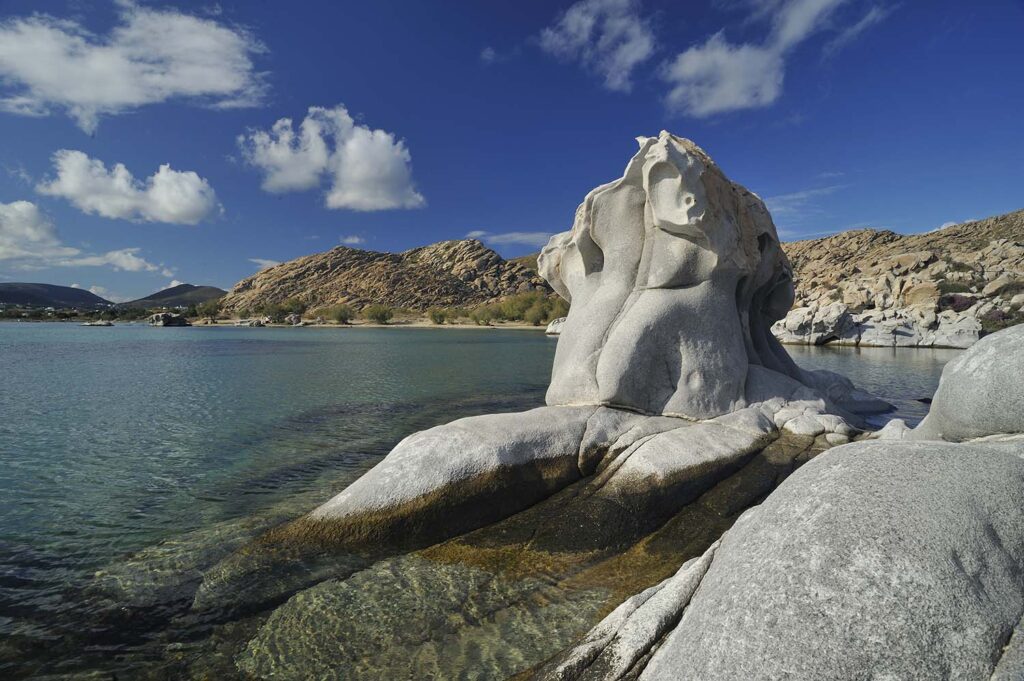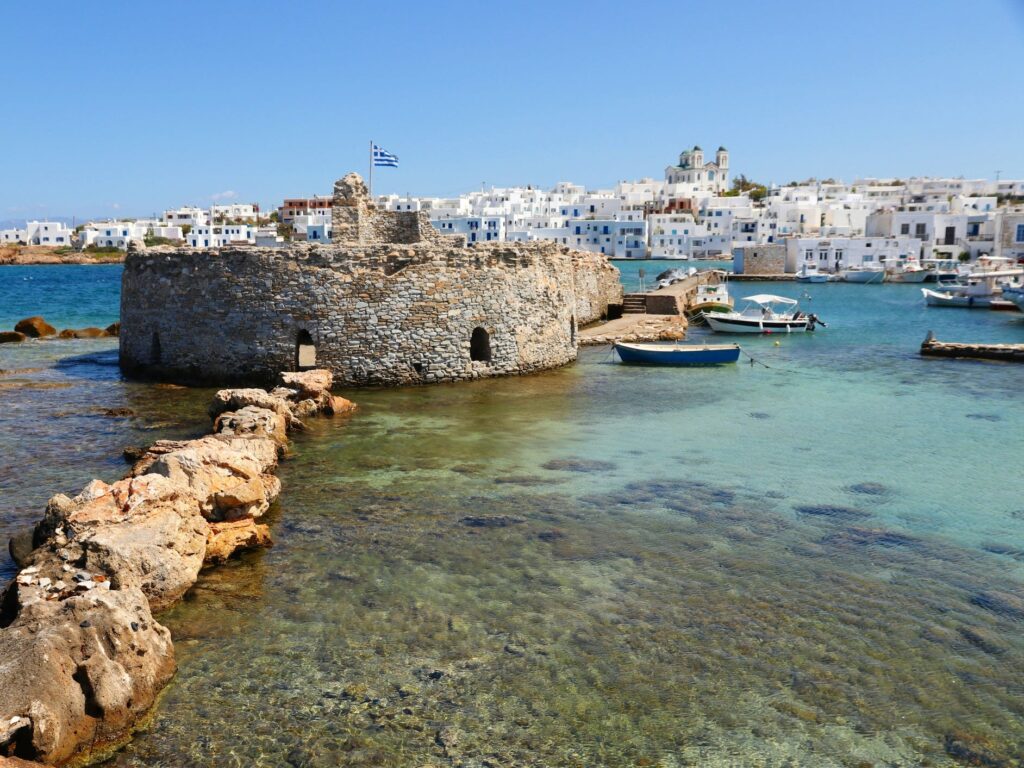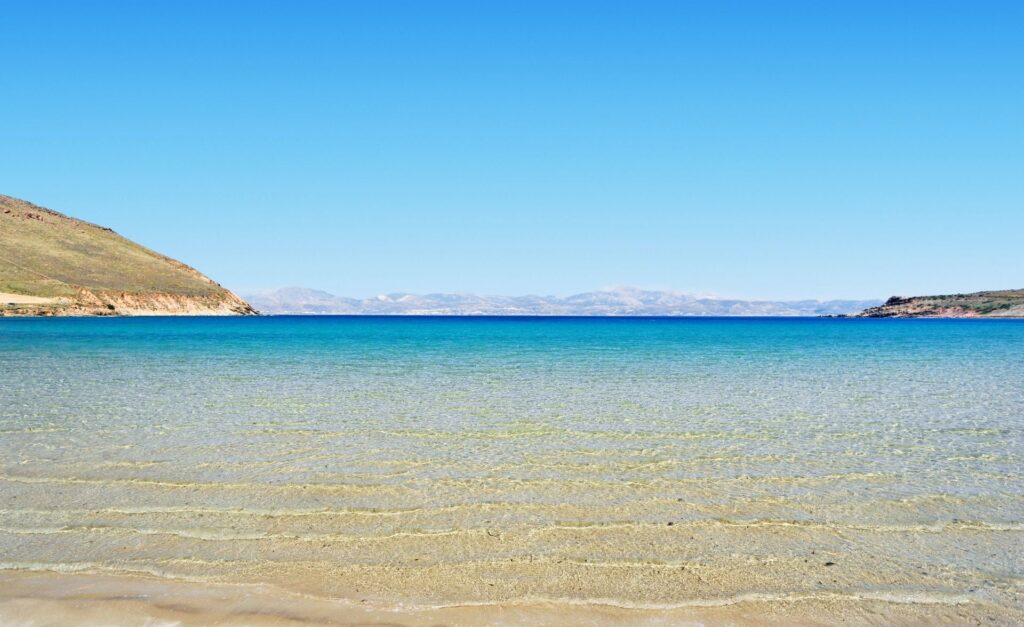Best Things to Do in Paros
Introduction
Right at the center of the Cyclades, the island of Paros is a holiday destination cherished for its phenomenal beaches and cute Cycladic villages of snow-white houses. Parikia, the main port, is a knot of winding streets below a castle made from re-used marble from an ancient temple, while the small fishing port at Naoussa is one of the Cyclades’ most endearing scenes. Paros is synonymous with the high-quality marble quarried in ancient times, used for the Parthenon’s roof tiles and iconic sculptures like Nike of Samothrace and the Medici Venus. The beaches on Paros, bathed by shallow waters of shades ranging from turquoise to royal blue, are almost too good for words. In the capital is an early Christian wonder, the Panagia Ekatontapiliani church, founded by St Helen 1,700 years ago.
Lefkes
In the mountainous center of Paros, Lefkes is a gorgeous village settled on a slope at a height of 300 meters. Not many tourists get up to this place, and you can park outside the town and take a tour on your own two feet on little alleys and pine-shaded squares with tavernas and traditional bakeries. The Agia Triada Church, built from fine Parian marble and flanked by two majestic belfries, is an excellent place to begin and has some invaluable Byzantine icons. On the streets, you’ll see a couple of washhouses, which a few inhabitants still use, while the slopes above the villages are sprinkled with windmills. Occasionally, you’ll be caught off guard by a long-distance view of the neighboring island of Naxos.

Naoussa Old Port
The most beautiful feature of Naoussa in the north of Paros is its sweet little rectangular harbor guarded by the Venetian fort, which we’ll talk about below. Small fishing boats are tied to the narrow quays, just a meter or two away from the dozens of restaurant tables that crowd the waterside and the square in front. Understandably, this very picturesque place is prominent with tourists, and things can get hectic in the evenings when people even queue up to take a photo of the sunset from the quays. Nobody will be around at this lively resort early in the morning, so you can get a shot of the rising sun illuminating the Church of Agios Nikolaos wall and the fort behind.
Parikia
The main port of Paros, Parikia, is an enchanting maze of streets and passages paved with marble and fronted by Cycladic cube-shaped houses with blue doors, balconies, and shutters. Geraniums, bougainvillea, and potted flowers bring added splashes of color to the city’s white walls. Parikia was a port shipping the island’s marble in ancient times, and its current buildings are constructed over the ancient city. There’s also a method to the bewildering tangle of streets, designed by the Venetians to confound pirates and potential invaders. Parikia’s Venetian castle is on a hillock dating to the 1200s and composed of marble spolia (re-used stone) from a temple that stood here before. On a roundabout at the port is the Parikia’s signature, a lone whitewashed windmill.

Panagia Ekatontapiliani
“The Church of a Hundred Doors” in Parikia dates to the 4th century and is said to have been founded by St Helen, the mother of Constantine, when she stopped on the island during a pilgrimage to the Holy Land. As such, it is one of Greece’s outstanding early Christian monuments, with architecture mainly from the 6th century during the rule of Justinian after the first church was damaged by fire. The interior eschews the normal colorful hagiography for simple Byzantine stone patterns and decorative friezes. Most eye-catching is the iconostasis in front of the apse, which is held up by marble columns with Corinthian capitals that were fashioned in the 500s. Here, you can view the most venerated of the church’s icons, the Virgin of Ekatontapiliani, painted in the 1600s. Give yourself time to view the baptismal font and learn about the church’s history at the museum in the cloister.
Marcello Beach

Most people agree that the best beach on the island is ten minutes away from the bay of Parikia. With a crescent of white sand, pool-like waters, and full waiter service, it’s a mystery why Marcello isn’t busier. The sea is so tranquil that the only thing that musters more than a ripple in the wake caused by ferries entering and leaving Parikia’s harbor in the distance. Children will have time to play in these safe waters while parents and couples will be spellbound by the vistas over the glimmering sea, back to Parikia and its mountainous backdrop. As always, front-row sun loungers cost a little extra, so you may need to arrive early for a good spot in summer.
Kolymbithres Beach

Ten minutes from Naoussa, this beach is a string of sandy coves, all separated by surreal granite rocks that also litter the water around the bay. Over millennia, these rocks have been chiseled by the sea and north wind into strange shapes that look like an abstract artist sculpted them. Their faces are also marked with ridges, straight vertical lines, and holes, and you can sunbathe on top of some and climb others to indulge your curiosity. Between the rocks are enticing sandy beaches, and the stones create pools of calm, shimmering water to swim and snorkel in.
Paros Park
The Aï-Yannis Detis Peninsula in the north of Paros has become a culture and recreation park. Moments from Naoussa, you can tackle walking trails that guide you past yet more outlandish rock formations, caves, a lighthouse, and hidden coves. The hills in the park have wild herbs and flowers and arresting views back over the bay to Naoussa. The granite on the paths was used in Neolithic times for ornaments, weapons, and jewelry. There’s also a free open-air cinema screening arty and classic movies (Almodóvar and Hitchcock were on the program in 2017) and an incredible theater for music and performances. And all this without mentioning Monastiri Beach, which has another pool of pure, clear water.
Naoussa Venetian Castle

This town was a pivotal commercial port in Venetian times, and as a response to the growing threat from the Ottoman Empire, the lord of the island, Crusino I Sommaripa, built a fort to guard the harbor. The small circular tower standing there now and burrowed with casemates was constructed in the first decades of the 16th century, just before Paros fell to the Ottomans under the command of Barbarossa. You can get to the fort on foot via a harbor mole and peer through the firing positions for a beautiful perspective of Naoussa’s white and blue seafront.
Archaeological Museum of Paros
Given the island’s distinguished history, a visit to the Archaeological Museum should be on your agenda if you’re interested in Ancient Greece. The museum is small but has a lot packed into its two rooms and courtyard. There are archaic and classical sculptures, pottery, and various other finds from the Neolithic to Roman times. Outside is a lapidarium with funerary friezes, architectural pieces, urns, and a Roman mosaic. One unmissable exhibit is the statue of Gorgon, which is in a fantastic state of preservation and dates to the 6th century BC. Also fascinating are the relief plates from a memorial for the Parian poet Archilocus, who lived during the 7th century BC, and the statues of Nike and Artemis, both from the 5th century BC.
Faragas Beach
The quiet south coast of Paros is windy and heavily indented, with small coves in between the rugged headlands. At the head of one cove is Faragas, a small but beautifully formed stretch of sand set far in from the coast and out of the wind. The beach has a single bar, which provides sun lounger rental and full server service, so you won’t even have to get up for a drink or meal. The bar also plays music depending on the time of day, with gentle classical music first thing in the morning and more upbeat later in the day. The water is as calm and transparent as you’d hope, and for a bit more seclusion, you can head along to one of the tiny coves on either side of the beach.
Moraitis Winery
Winemaking has a tradition on Paros that dates back at least 5,000 years to the Cycladic era. The Venetians also produced wine on the island, and Paros is where the Monemvasia grape was kept alive when it died out everywhere else. Established in 1910, the Moraitis Winery is now in the family’s fourth generation. In sandy clay-rich soil on 10 hectares are vineyards growing grapes native to Paros, some well-known and some rare. Among them are Aidani Black, Karampraimi, Mandilaria, Monemvasia and Vaftra. On a visit, you can go into the underground aging cellars, see the antique winemaking implements in the museum, and taste their full range of reds, whites, rosés, and dessert wines with a cheese and meat board.
Golden Beach
Awarded the Blue Flag year in and year out, Golden Beach is an aptly named sandy bay southeast of Paros. The beachfront is traced by bars and restaurants, renting out palm sunshades and sun loungers. As ever, the sea is shallow and transparent, but it’s the wind that sets Golden Beach aside: The beach is a honeypot for windsurfers and kite-surfers, and if you’ve ever been curious about trying these sports for the first time, you may not find a better location in Greece. The shallow water and a cold drink are enough exhilaration for everybody else.
Museum of Cycladic Folklore

On the edge of the southern town of Aliki is a quirky private museum that is all the work of a single man, Benettos Skiados. In his garden, amid olive trees, amaranth, and honeysuckle, he has built a little city of Cycladic monuments, like the Monastery of Hozoviotissa on Amorgos, the Venetian Castle of Parikia, the Tourlitis Lighthouse on Andros, the Ancient Theatre of Milos and the Panagia Ekatontapiliani. In the house is an armada of model ships crafted by Benettos, ranging from Ancient Greek triremes to steamboats. The skills for building these scale monuments were all self-taught and done without using scientific instruments or making drafts.
Molos Beach

This beach on the east coast only ever has a few bathers. No holidaymakers go this far, even though Molos Beach is only ten kilometers south of Naoussa. There’s no built-up tourism here, just a mushroom-shaped sandy bay with views of Naxos, bookended by the Kefalos and Antikefalos hills. To the bay’s south is a small harbor hemmed by strange granite rock formations. Kefalos Hill is also worth your attention as it’s an extinct volcano. The 16th-century monastery of Agios Antonios is at the top, standing in the crater, while the vestiges of a 15th-century Venetian castle sit nearby.
Boat Trips around Paros

Parikia, Naoussa, and Aliki ports are springboards for ferry crossings to the island of Antiparos next to Paros, but also single-day yacht trips around the uninhabited archipelago between the two. On a private or semi-private cruise, you’ll stop at islands like Panteronisi to swim or snorkel (gear is usually provided) in the light blue water of the “Blue Lagoon,” set foot on deserted beaches, and paddle into sea caves. Food and drinks are offered (souvlaki, grilled sardines, tzatziki), and you can also book a romantic dinner cruise to watch the sunset from the water to the west of Paros.











